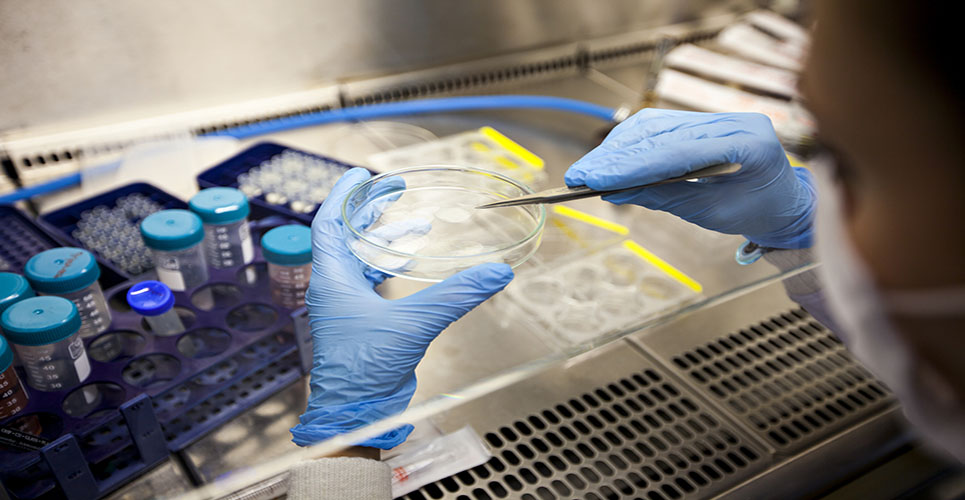teaser
A pilot study on psychosocial factors and adherence to antiretroviral therapy suggests using a questionnaire could help stop adherence failure and aid implementation of measures to boost adherence
Yvonnick Bézie
PharmD PhD
Director
Anne Roualt
PharmD
Isabelle Auperin
MD
Lok-Hang Yan
PharmD
Jacques Gilquin
MD
Pharmacy Department
Department of Infectious Diseases
Groupe Hospitalier Paris
Saint-Joseph
France
It is widely recognised that adherence to antiretroviral therapy (ART) is critical to long-term treatment success, even if adherence is frequently subtherapeutic.
Medication adherence may be characterised by the extent to which a patient takes a form of medication in the way intended by a healthcare provider.[1] ART adherence is a significant determinant of survival for patients infected with immunodeficiency virus (HIV) with CD4 count.[2] An adherence level of 95% is necessary to achieve and sustain suppression of viral load.[3] Nevertheless, typical adherence rates for ART over
long periods are approximately 50-75%.[4] Nonadherence is widely attributed to factors related to the treatment regimen such as the number of drugs prescribed, the therapeutic schedule or side-effects. The impact of psychosocial factors is less well evaluated.[5]
Pilot study
Our aim in carrying out a pilot study was to assess the ART adherence rate in a cohort of HIV-infected patients in France and to evaluate factors associated with nonadherence. A questionnaire was completed during patients’ hospitalisation or at consultations in an infectious diseases department. Sociodemographic factors were taken into account in addition to drugs regimen, biological data and patients’ overall satisfaction.
Ninety-seven patients aged 18-85 were studied. Half were poor adherents to the drug treatment. Patients spontaneously declaring themselves noncompliant were characterised by a higher viral load associated with a lower CD4 cell count and dissatisfaction with both treatment and quality of life.
The study was carried out at Groupe Hospitalier Paris Saint-Joseph, a private general hospital with 450 acute beds. HIV-infected inpatients admitted to the infectious diseases department and outpatients were included in the study.
Those who refused to participate and patients without treatment during the investigation or included in another observational study focusing on the same topic were excluded.
The evaluation of factors in adherence and nonadherence was based on self-reported data from answers to a questionnaire administered by a pharmacy student. The questionnaire’s five components covered:
- Patient variables: sociodemographic factors such as age, gender and origin.
- Disease characteristics: the stage and duration of HIV infection.
- Treatment regimen, including number of drugs prescribed, therapeutic schedule and drug side-effects.
- Adherence: respect shown to the treatment regimen, and factors relating to nonadherence such as professional activity and number of doses per day.
- Overall patient satisfaction in terms of treatment and quality of life.
The questionnaire was filled out by the patient during the consultation or by a pharmacy student when the patient was hospitalised.
A patient was classified as compliant if he or she had taken all medications with complete adherence to the provider’s recommendations; otherwise, he or she was classified as noncompliant.
Results
We studied 97 patients. Patient variables are summarised in Table 1. Forty-six patients were classified as compliant, while 51 were deemed noncompliant. There were 11 self-reported noncompliers (SRNCs). SRNCs have a higher percentage of HIV-detectable viral load (82%) associated with a decrease in CD4 cells (357 ± 170 vs 421 ± 294 CD4/ml; p<0.05).
Social characteristics and impact of therapeutic characteristics did not differ between the two groups (see Table 2).
In contrast, psychosocial factors (professional activity, perception of treatment duration, how tiring treatment was, patient appearance, treatment satisfaction and quality of life) were strongly associated with nonadherence (see Figure 1).
[[HPE39.47]]
Discussion
Our study indicated that only half the HIV-infected patients were ART-compliant. Our data accord with the literature and demonstrate the difficulty of sustaining complete adherence in patients treated long-term.
[[HPE39.48]]
Adherence is a dynamic process that fluctuates not only according to factors associated with the disease and its treatment but also according to psychosocial factors.
Our survey confirms the difficulty of highlighting clear-cut associations between adherence and sociodemographic and therapeutic factors.[6,7] The small size of our cohort should account for this result, but we found a strong association between adherence and psychosocial factors.
This obvious result, in spite of the small size of the studied population, strongly suggests that psychosocial factors are the major parameters explaining adherence rate. HIV patients’ treatment satisfaction and perception of quality of life must be taken into account by all health professionals working to improve ART adherence rates. A simple questionnaire, filled in by a pharmacist or others, would improve knowledge of patients and thereby encourage improvement and personalisation in ART.
Conclusion
This pilot study highlights the impact of psychosocial factors on HIV patients’ level of adherence to ART.
Whether routine use of a short and simple questionnaire could allow evaluation to prevent a possible failure in adherence, and also implementation of corrective measures to improve adherence rate to ART, remains to be investigated.
[[HPE39.48a]]
References
1. N Engl J Med 2005;353(5):487-97.
2. AIDS 2001;15(9):1181-3.
3. Ann Intern Med 2000;133(1):21-30; 2002;136(3):253.
4. J Acquir Immune Defic Syndr 2002;31(3):103-6.
5. J Acquir Immune Defic Syndr 2002;31(3):128-31.
6. J Acquir Immune Defic Syndr 2006;41(4):477-85.
7. J Acquir Immune Defic Syndr 2001;28(3):232-9.

